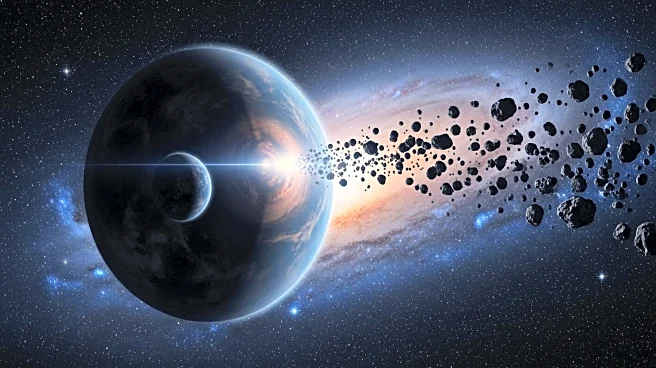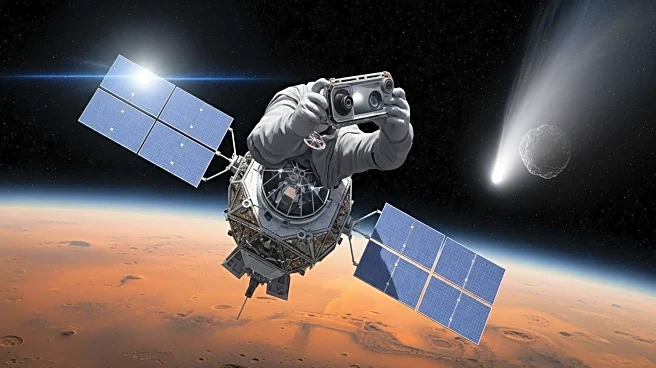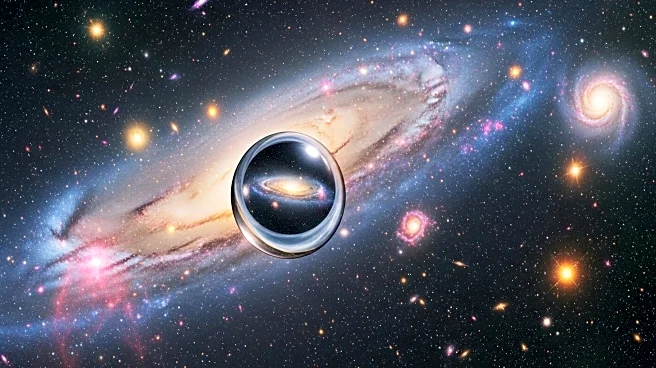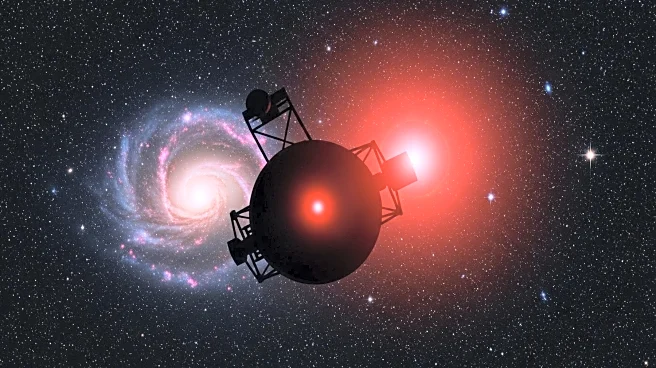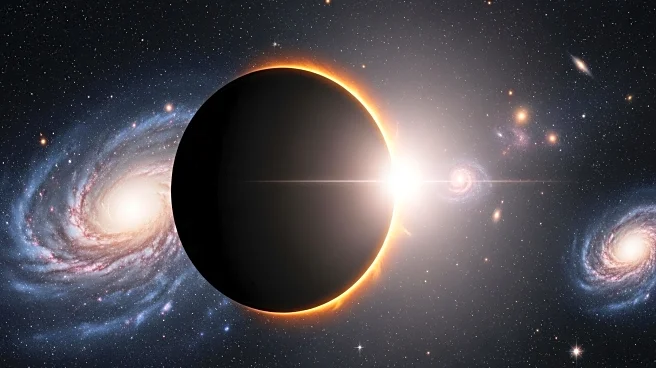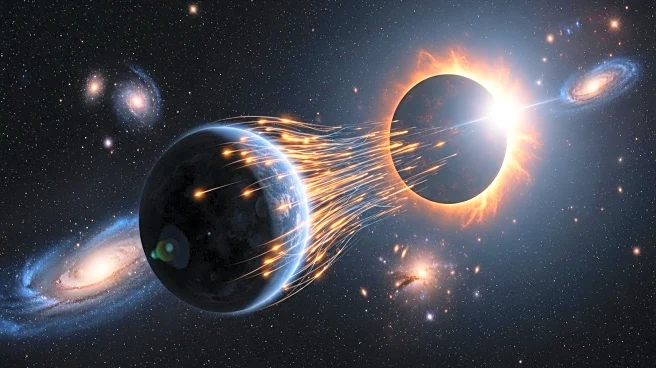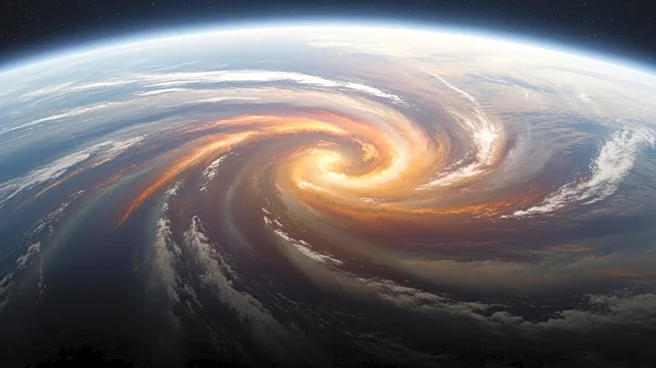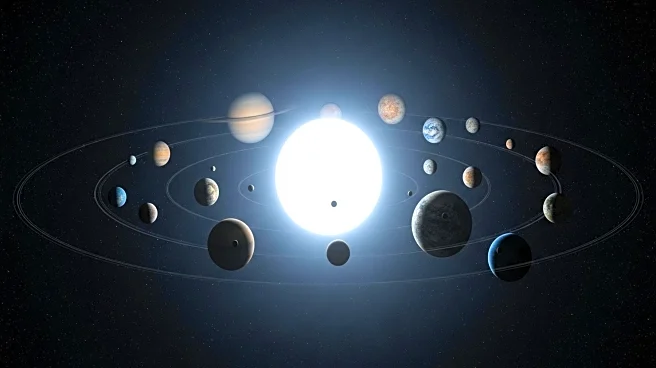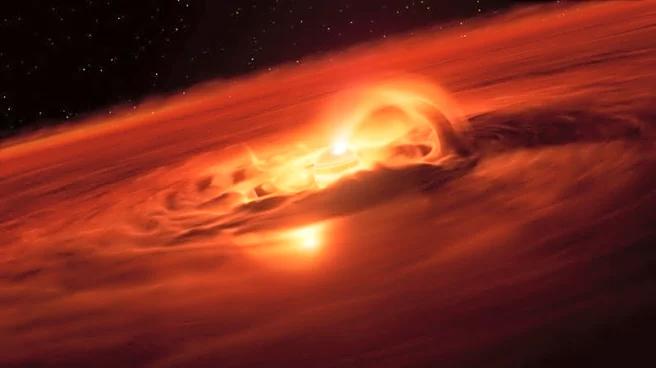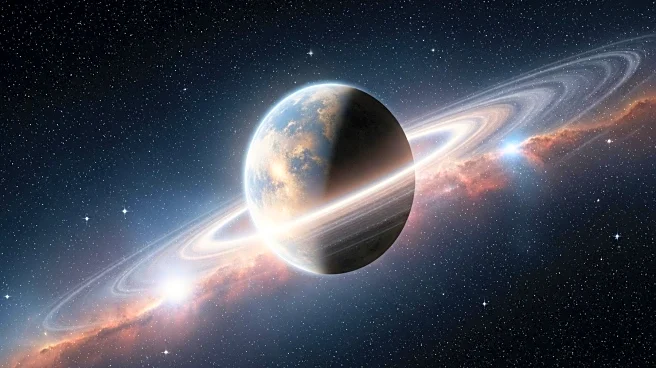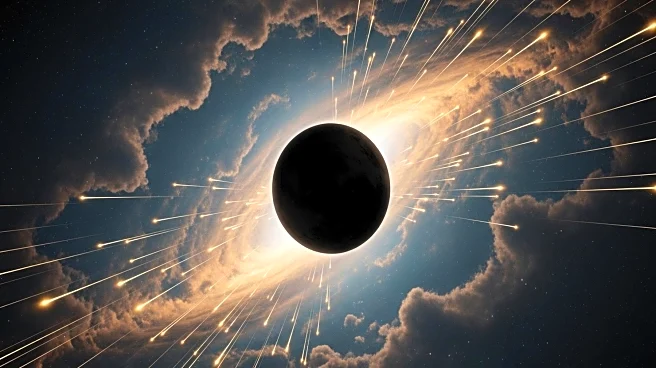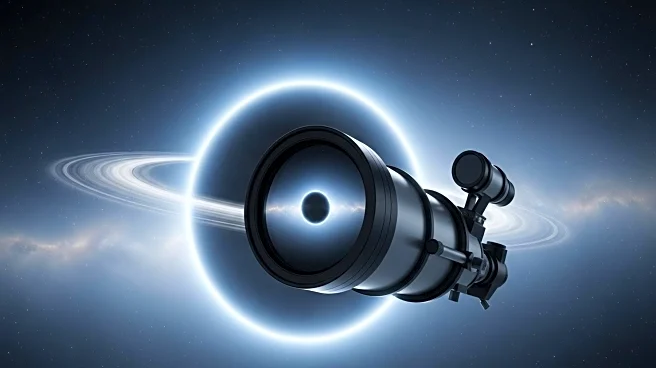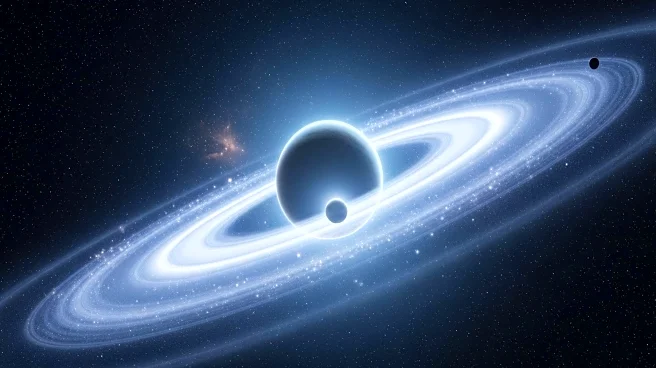What is the story about?
What's Happening?
Astronomers have discovered a rogue planet, Cha 1107-7626, consuming material at an unprecedented rate of six billion tonnes per second. This planet, located approximately 620 light-years away in the constellation Chamaeleon, is not orbiting a star and is undergoing rapid growth through a process known as accretion. The European Southern Observatory's Very Large Telescope observed this phenomenon, challenging existing theories about planetary formation and blurring the lines between stars and planets. The planet's mass is estimated to be between five and ten times that of Jupiter, and its rapid growth offers new insights into the mechanisms behind rogue planetary formation.
Why It's Important?
The discovery of Cha 1107-7626's rapid growth challenges traditional distinctions between stars and planets, suggesting that rogue planets may form through processes similar to those of stars. This finding has significant implications for our understanding of planetary evolution and the diversity of celestial bodies. The presence of strong magnetic fields funneling material toward the planet, a phenomenon previously observed only in stars, further supports this notion. As technology advances, the study of rogue planets is set to enter a new era, potentially reshaping our understanding of the cosmos and the various ways in which celestial bodies come into existence.
What's Next?
Future telescopes, such as the European Southern Observatory's Extremely Large Telescope, promise to enhance our ability to detect and analyze rogue planets like Cha 1107-7626. These advancements will allow astronomers to explore the characteristics of rogue planets in greater detail, potentially uncovering more about their formation and evolution. The knowledge gained from these studies may reshape our understanding of the cosmos and the processes that govern planetary and stellar formation.
Beyond the Headlines
The discovery of rapid accretion in Cha 1107-7626 raises questions about the fundamental differences between stars and planets. The chemical composition of the accretion disc changed during the burst, with water vapor appearing during the event, suggesting that planetary and stellar formation processes may overlap. This blurring of boundaries between stars and planets invites further exploration into the formation of rogue planets and their potential overlap with stellar processes.
AI Generated Content
Do you find this article useful?
